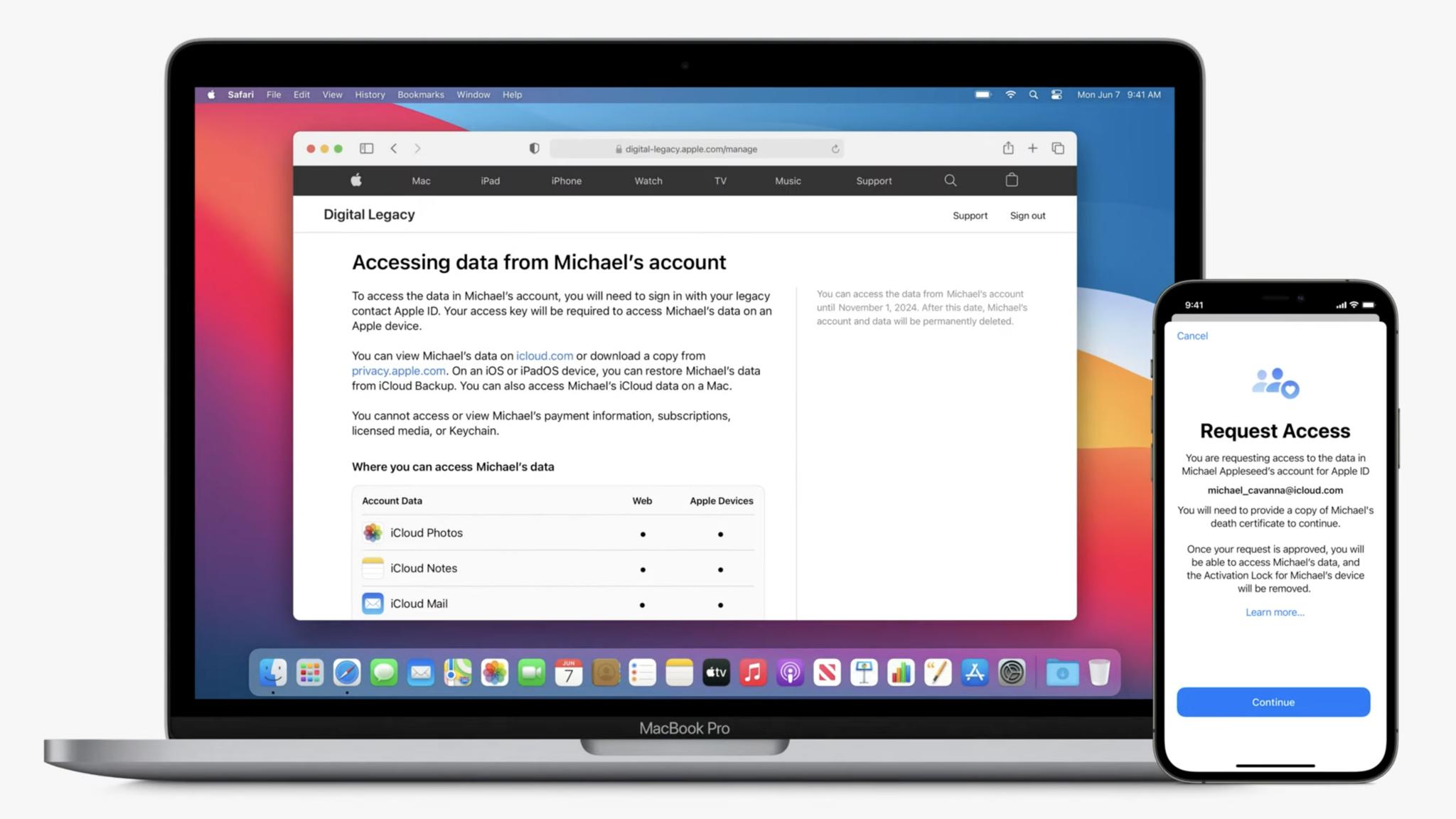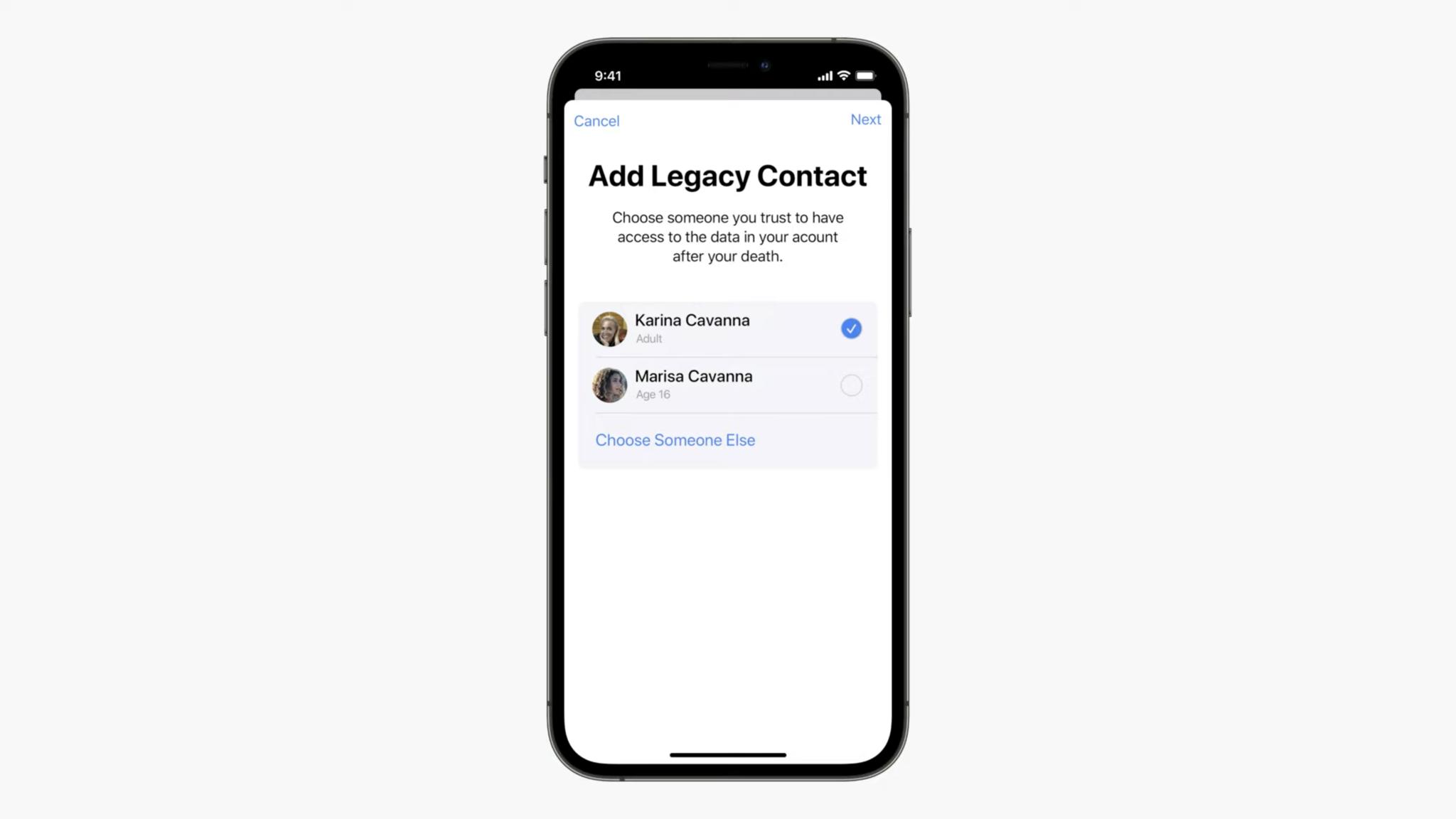
Losing a loved one is tough and, with all the information we keep in digital form these days, it can be increasingly hard for next of kin to gain access to all sorts of important documents and data.
It's a problem Apple aims to solve, at least in part, with Digital Legacy — a new program launching with iOS 15.2, iPadOS 15.2, and macOS Monterey 12.1 — that will allow elected individuals to gain access to a relative's account in the event of them passing away.
Here's everything you need to know about it.
What is Digital Legacy?
In short, Apple's Digital Legacy program is a way for someone you choose to access your digital information stored in iCloud after you die. It's not nice to think about, but given how much of our lives are lived in digital form, this could prove hugely helpful.
As Mike Abbott, VP of Apple Cloud Services, put it when announcing the upcoming feature at WWDC:
"We don't often think about it, but it's important that we can easily pass down information to family members or friends when we pass away. So you'll now be able to add people to your account as Legacy Contacts. So when you're gone, they can request access, and your information can be passed along quickly and easily."
Picture it this way. You pass away, and all of your photos, contacts, documents, notes, and more are locked behind your Apple ID password that you never told anyone.
Keeping your password to yourself is the right call, but that makes it impossible for relatives to access your information once you're no longer around. So what Digital Legacy allows you to do is keep that best iPhone security practice in place while naming select friends or family members as Legacy Contacts who can then request your data in the event of your death.
Master your iPhone in minutes
iMore offers spot-on advice and guidance from our team of experts, with decades of Apple device experience to lean on. Learn more with iMore!
Those named people can contact Apple to receive a copy of your important data stored in iCloud in the event of your death.
What sort of data is available for Legacy Contacts?
Chosen Legacy Contacts will be able to access data like photos, notes, and iCloud mail. Here's the full list of accessible data:
- iCloud Photos
- Notes
- Contacts
- Calendars
- Reminders
- Messages in iCloud
- Call history
- Files stored in iCloud Drive
- Health Data
- Voice Memos
- Safari Bookmarks and Reading List
- iCloud Backup
A Legacy Contact can view the deceased person's data on iCloud.com or download a copy. Additionally, an iCloud backup can be restored onto an iOS or iPadOS device, and data is also accessible on a Mac.
Note, this data is only available in the event of the account owner's death and after Apple has approved a request — it's not automatically available to all Legacy Contacts in real-time.
Apple explicitly states that iCloud Keychain, payment information, subscriptions, and licensed media will not be accessible to Legacy Contacts. Here's the complete list of exclusions, according to Apple:
- Licensed media, for example, films, music, and books that the account holder has purchased
- In-app purchases, for example, upgrades, subscriptions, game currency, or other content that was bought inside an app
- Payment information, for example Apple ID payment information or cards that have been saved for use with Apple Pay
- Information stored in the account holder's Keychain, for example, Safari usernames and passwords, internet accounts (used in Mail, Contacts, Calendar, and Messages), credit card numbers and expiry dates, and Wi-Fi passwords
How do I add Legacy Contacts?

It's fairly straightforward to add Legacy Contacts on iPhone via the Password & Security section of your Apple ID settings. You can pick members of your Family Sharing setup or any other friends and family members that you trust. If you prefer, you can also set up Legacy Contacts on your Mac.
Once you do, Apple will generate an Access Key which your Legacy Contact will need to download your data in the event of your death. When adding a Legacy Contact, you get the option to print a copy of this Access Key or send it to them via iMessage to store on their Apple device. You will be able to find this Access Key again through your settings if you don't share it right away.
I am a Legacy Contact, so how do I request access to a loved one's account?
If a friend or family member has sadly passed away and you were already set up as a Legacy Contact for them, you will be able to request their data from Apple at its dedicated Digital Legacy site.
You'll need to provide the person's death certificate and the Access Key that was created when you were added as a Legacy Contact.
Once Apple approves your request, you will receive a special Legacy Contact Apple ID to access the account data. The account holder's original Apple ID will no longer work and Activation Lock will be removed from their devices.
Will my data be available to Legacy Contacts forever?
No. Once Apple approves a Legacy Contact request, a period of three years begins where the Legacy Contact Apple ID will allow access to the original account holder's data.
After this time, the Legacy Contact Apple ID will stop working and the deceased individual's data and account will be permanently deleted.
How do Legacy Contacts differ from Recovery Contacts?
Alongside Digital Legacy, Apple also announced a new feature for gaining access to your account if you forget your password in the form of Recovery Contacts. Other than the timing of their announcement, these features are unrelated.
Recovery Contacts is simply another way for you to regain access to your account if you forget your password or get locked out, as Abbott described it at WWDC:
"You'll now have the option to add people you trust, like family and friends, to a Recovery Contact list. They won't get any access to your account, but if you ever forget your password, you can call them to get the code you need to get right back in. It's fast, easy, and secure."
With Recovery Contacts, you are still accessing your own account. Your trusted contact is simply providing you with a code that has been given to them by Apple when you need it.
On the other hand, Digital Legacy is a feature that allows someone else to access your account but only in the event of your death. Legacy Contacts and Recovery Contacts do not have to be the same people.
Prudent thinking
While it's a slightly morbid thought, it's true that none of us will be around forever and our data will most certainly outlive us. If you have friends or family that would benefit from access to your data if you were no longer around, then it's wise to set up a Legacy Contact or two.
Once set up, you can get on with your life knowing that important information or precious photos are still available to those that might need access even if the worst was to happen to you.
Updated December 2021: Additional information added following the launch of Apple's Digital Legacy program alongside iOS 15.2.
Adam Oram is a Senior Writer at iMore. He studied Media at Newcastle University and has been writing about technology since 2013. He previously worked as an Apple Genius and as a Deals Editor at Thrifter. His spare time is spent watching football (both kinds), playing Pokémon games, and eating vegan food. Follow him on Twitter at @adamoram.

